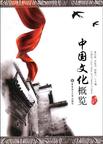中国文化概览
出版时间:2009-5 出版社:华东理工大学 作者:龙毛忠//贾爱兵//颜静兰 页数:312
Tag标签:无
前言
自改革开放以来,中国向世界敞开了大门。外面的东西不断涌进中国。介绍外国文化的书籍、影片、电视节目等充斥我们的文化阵地。有关外国的人文学科也相继在各大专院校陆续开设,其目的非常明确:让学生接触、了解他们所学目的语的文化,培养跨文化交际交流意识,以保证他们在今后的国际竞争中能够灵活处理文化差异,掌握交际的主动权,从而立于不败之地。 但应该看到外国(主要是英美)文化的潜移默化作用。这种单向吸收导致很多年轻学生言必称英美、唯英美马首是瞻、对西方的文明极其钦羡向往,而对自己祖国的文化或一无所知,或了解也不知如何用外语对外介绍,如此便形成了不均衡的交流态势。 我们认为任何交流都应是双向的。我们的学生在对目的语国家的文化予以关注的同时(这是学好外语的必要条件),也应该对自己国家悠久的历史、灿烂的文化、优秀的文学传统了如指掌并且由衷地感到自豪,应该能担当起向世界介绍我们国家的历史发展轨迹和政治、经济、文化、教育等情况以及风土人情、风俗习惯等一般人文知识的职责(这是学习外语的主要目的之一)。中国文学是世界文学宝库中的奇葩,汉语语言瑰丽多采;中国的风俗习惯多姿多彩,源远流长;中国的音乐悠扬动听,美妙绝伦;中国传统工艺异彩纷呈,美轮美奂;中国智慧更是无所不包,令人叹为观止;中国的宗教哲学博大精深,其影响不仅透人中华民族的骨髓,而且在全世界也产生了积极作用(连美国前总统克林顿都曾经引用过老子的名言:“治大国若烹小鲜。”)。 通过实施教学,使学生对中国文化有一定了解,接触中国文化的方方面面,由衷地产生对祖国及其文化的自豪和热爱,扩展文化视野,丰富文化内涵,学会随时能用英语流利地介绍中国文化和中国人民。这样就可以避免在与外国人交往时出现“跷脚现象”,即谈起英美滔滔不绝,眉飞色舞,如数家珍;提到自己国家的文化时却嗫嗫嚅嚅,抓耳挠腮,词不达意。
内容概要
2008年北京第29届奥运会的成功举办,让全世界的目光聚焦中国,更在全世界掀起空前的“中国热”。要让中国文化传播得更远,让更多的人了解它,我们这些炎黄子孙责无旁贷。
为此,选编了本书,以供英语学习者、有心对外介绍中国灿烂文化的人士、志在成为中西文化交流大使的外国留学生以及外交领域的有识之士使用。作者不仅在书中简要介绍了人们感兴趣的中国文化诸多元素,而且将会与书的出版同步在华东理工大学出版社的网站上提供思考题和测验题,并均附有参考答案,这样不仅有利于教学,而且方便自学。
书籍目录
Chapter 1 中国概况
Chapter 2 中国历史简介
Chapter 3 中国政体
Chapter 4 中国少数民族政策及实施
Chapter 5 中国古代哲学和宗教
Chapter 6 中国古代教育
Chapter 7 中国姓名
Chapter 8 中国语言文字
Chapter 9 中国成语和寓言故事
Chapter 10 中国饮食文化
Chapter 11 中国茶文化
Chapter 12 中国少数民族服饰
Chapter 13 中国植物文化意象
Chapter 14 中国传统婚俗
Chapter 15 中国传统民间游艺
Chapter 16 中国古代武术
Chapter 17 中国书画艺术
Chapter 18 中国雕刻
Chapter 19 中国农民画
Chapter 20 中国民族乐器
Chapter 21 中国民族音乐
Chapter 22 中国传统民间工艺
Chapter 23 中国智慧
Chapter 24 中国古代名楼
Chapter 25 中国古代园林
Chapter 26 丝绸之路
Appendix Ⅰ 中国文化词汇
Appendix Ⅱ 中国历史名人
Appendix Ⅲ 中国大事年简表
Appendix Ⅳ 中国之最
Appendix Ⅴ 中国世界自然文化遗产名录
参考文献
章节摘录
4. Penglai Pavilion Penglai Pavilion (see picture 24-4), seated on the cliff of Danya Mountain close to the sea in the north of Penglai City, is a famous coastal tourist site in easternChinas Shandong Province It is listed as one of the four famous towers in Chinatogether with Yellow Crane Tower, Yueyang Tower, and Tengwang Pavilion. Havinglong been known as a fairyland and famous place for watching mirages, PenglaiPavilion is regarded as the place where immortals inhabited, and thus it was frequentlyvisited for wonder herbs by emperors since Qin and Han dynasties. Built in 1061 by Governor Zhu Chuyue in the sixth year of Emperor Jiayou of theNorthern Song Dynasty, the Pavilion was intended for people to enjoy the sea view. Inthe 17th year of Wanli of Ming Dynasty, official Li Dai added more buildings around,which together with the Pavilion was called Pavilion complex. In the 24th year ofEmperor Jiaqing of Qing Dynasty, the Pavilion was expanded again on the basis of theexisting buildings sponsored by local government secretary Yang Fengchang andgarrison commander Liu Qinghe to the present complex occupying a construction areaof 18,960 square meters. After 1949, the government has appropriated funds manytimes for its renovation. In 1965, the Pavilion had resumed its original look, reflectingthe traditional architectural characteristics of ancient China. The Pavilion complex occupies a land of 32,800 square meters, a constructionarea of 18,960 square meters, composed of six buildings and their attachedconstructions, main hall of Penglai Pavilion, Longwang Palace, Tianhou Palace,Sanqing Temple, Lizu Temple and Mituo Temple. Constructed with double-deckwood, the main hall of Penglai Pavilion is seated on the north, facing the south, withsymmetrically built side rooms and wing rooms in front of both east and west sides.Wing rooms perform the role of halls, with hallways linking side rooms and stonestairs running up the Pavilion. Its ground floor measures 14.8 meters in length, and9.65 meters in width, with winding corridors and 16 columns surrounding all sides.Hung on the front door is a huge horizontal tablet inscribed with three Chinesecharacters: Penglai Pavilion (Penglai Ge), written by famous calligrapher Tie Bao ofthe Qing Dynasty. Three huge stone tablets are embedded in the outside of the north wall of thePavilions ground floor. One reads Blue Sea, Cool Breeze (Bi Hai Qing Feng), writtenby Lu Qiguang, a renowned Qing calligrapher. Another reads Placid Seawater (Hai BuYang Bo), of which the word Bu was struck by a cannonball during the 1894 to 1895Sino-Japanese war, leaving a visible scar. The other reads The Clear Sea (Huan HaiJing Qing).
图书封面
图书标签Tags
无
评论、评分、阅读与下载
用户评论 (总计5条)
- 感觉还不错,还没开始看
- 硬刷特别好,而且内容很吸引,看起来不枯燥
- five stars book
- 世博指定,值得信赖
- 自己老师编的这本书,本来借的,上完她的课就来买
